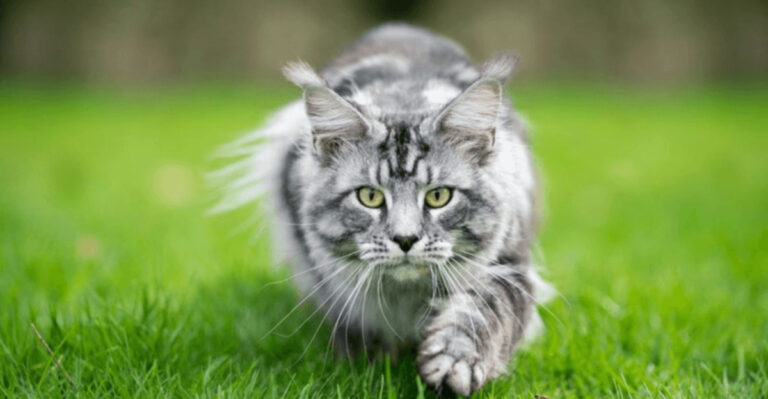14 Hidden Spring Hazards That Could Threaten Your Cat
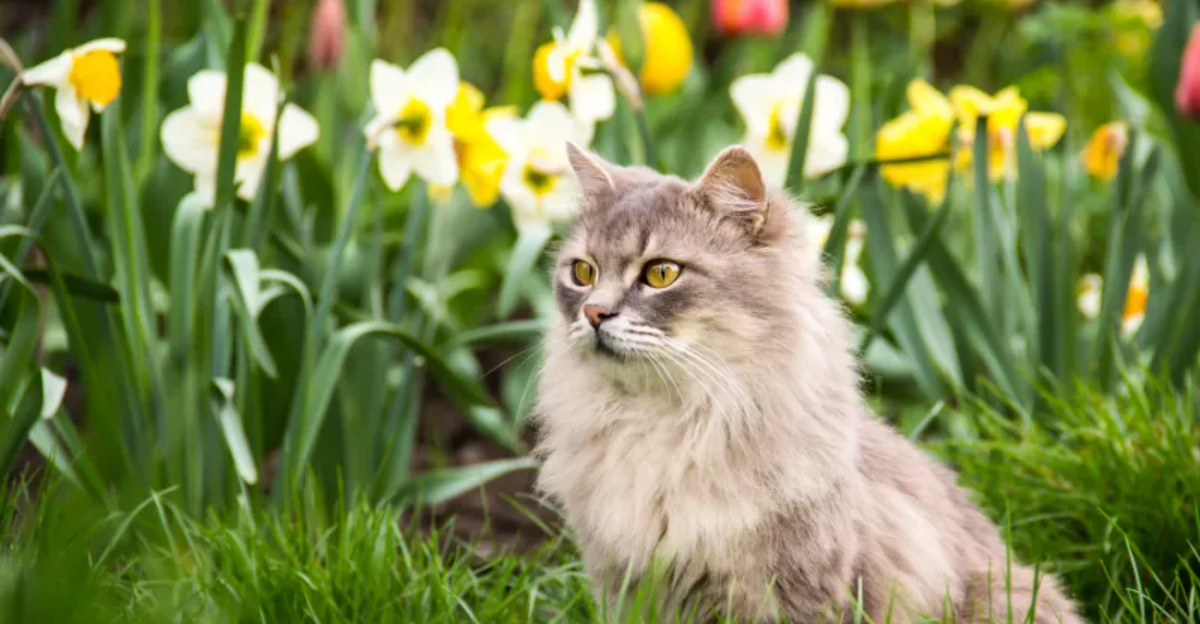
Spring brings renewed energy and outdoor adventures for curious cats, but also introduces unexpected dangers.
As flowers bloom and temperatures rise, hidden hazards emerge that many pet parents overlook. Knowing these seasonal threats can help keep your feline friend safe while they enjoy the refreshing spring air.
1. Toxic Spring Blooms
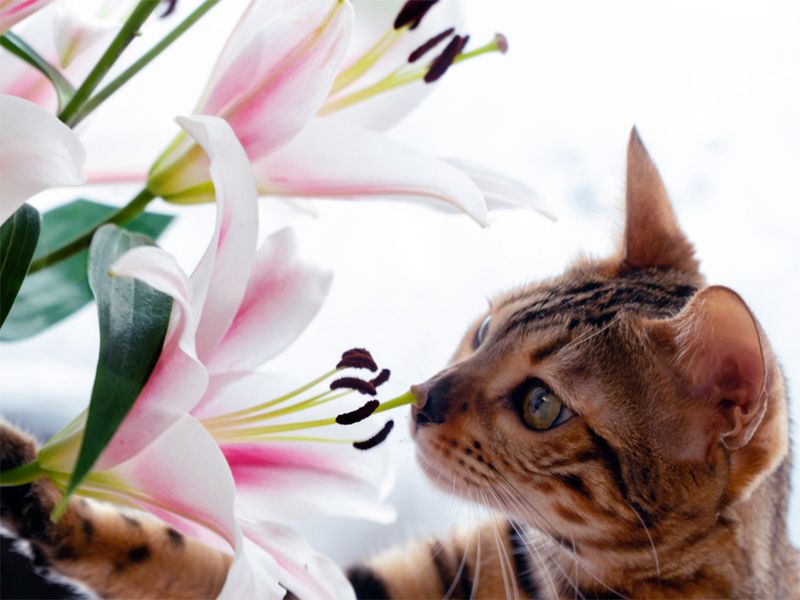
Lilies spell disaster for feline friends. Even small amounts can cause kidney failure within hours of ingestion.
Tulips, daffodils, and hyacinths also pack toxic compounds that trigger stomach upset, drooling, and even cardiac issues. Keep flower arrangements far from curious paws or choose pet-safe alternatives like roses or sunflowers.
2. Chemical Lawn Treatments
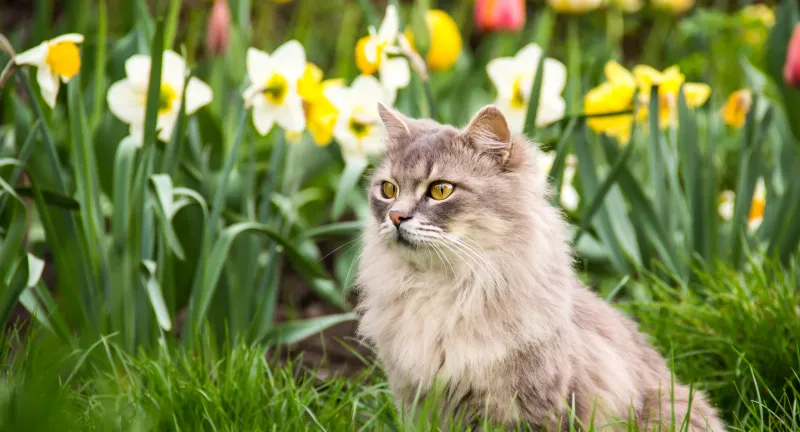
Freshly treated lawns become danger zones for paw-licking felines. Pesticides, herbicides, and fertilizers contain chemicals that stick to fur and get ingested during grooming sessions.
Always keep cats indoors for at least 24-48 hours after application. Check product labels for pet-safe options, and rinse paws if your adventurous kitty sneaks onto treated areas.
3. Open Windows Without Screens
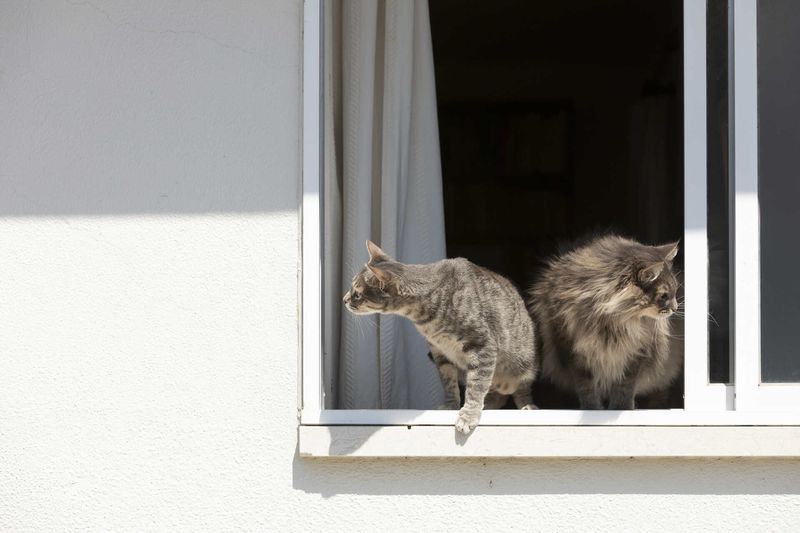
Fresh spring breezes tempt us to throw windows wide open. Without secure screens, these openings become launching pads for curious cats, leading to dangerous falls known as “high-rise syndrome.”
Check all window screens for tears or loose fittings before opening. Consider installing sturdy child-safety locks that allow ventilation while preventing wide openings cats could squeeze through.
4. Easter Basket Hazards
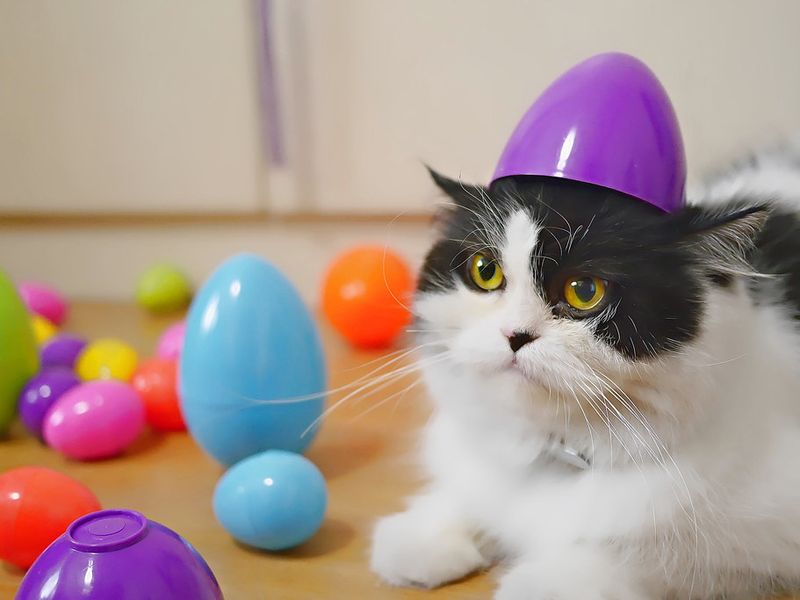
Chocolate bunnies and plastic grass create a perfect storm of feline dangers. Chocolate contains theobromine, toxic to cats, while shiny plastic grass becomes an irresistible stringy toy that can cause intestinal blockages if swallowed.
Store Easter treats in closed cabinets and replace plastic grass with paper alternatives. Immediately clean up any dropped candy wrappers your cat might find.
5. Spring Allergies And Medications
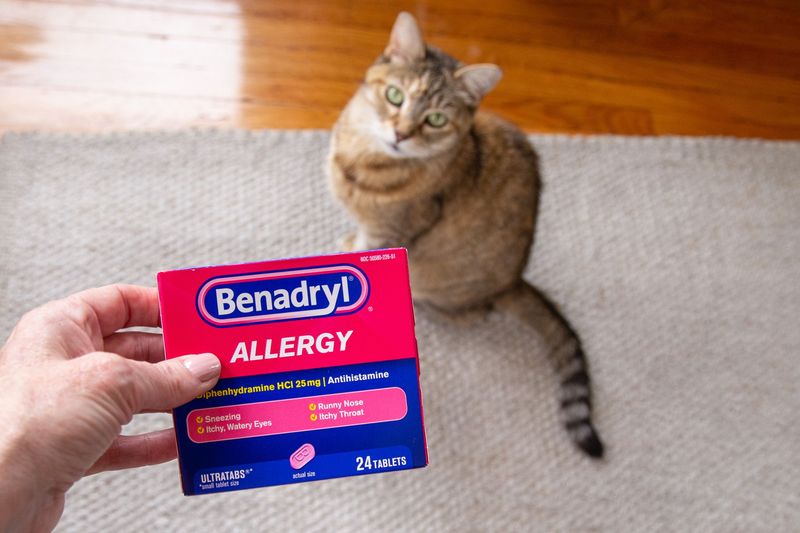
Allergy season means more medications around the house. Human antihistamines, decongestants, and pain relievers can cause serious harm or even death if your curious cat decides to sample them.
Store all medications in childproof containers inside closed cabinets. Never leave pills on nightstands or countertops, even briefly – cats are lightning-quick when investigating new objects.
6. Mosquito And Pest Treatments
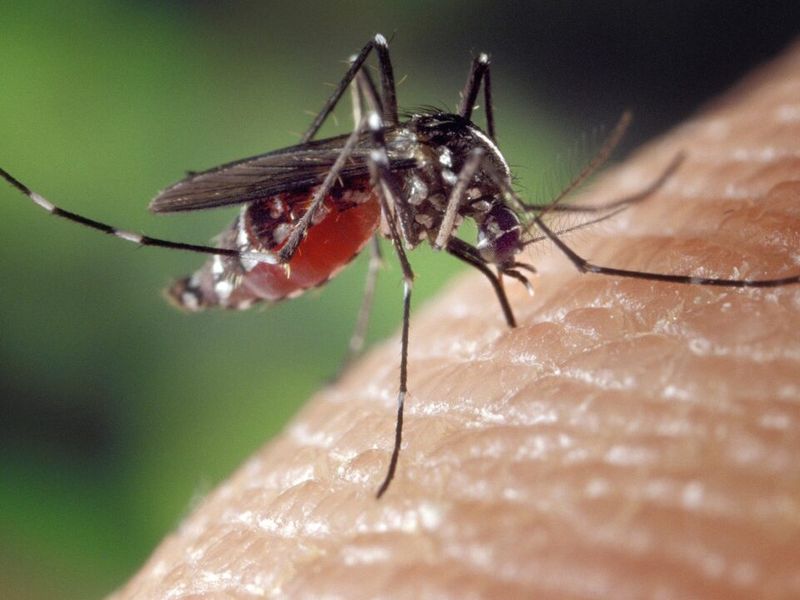
Bug zappers, citronella candles, and DEET-containing sprays emerge as temperatures warm. These common pest solutions contain chemicals highly toxic to feline nervous systems.
Choose pet-safe alternatives like catnip-based repellents for your yard. Keep cats indoors during mosquito fogging, and never apply human insect repellents to pets – they can cause tremors, seizures, and worse.
7. Emerging Wildlife Visitors
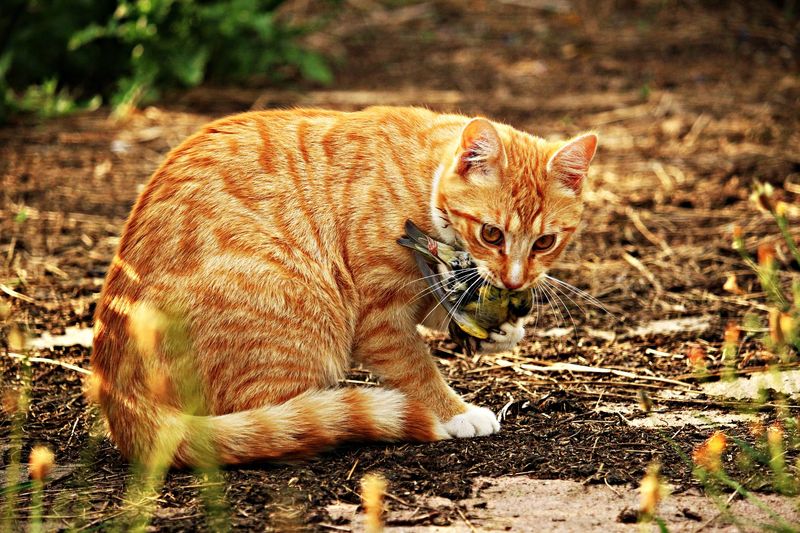
Spring awakens hibernating creatures and brings new wildlife to your yard. Curious cats may encounter snakes, toads, or baby animals with protective parents nearby.
Monitor outdoor time closely during spring wildlife season. Consider a catio or secure outdoor enclosure that lets your cat enjoy fresh air while staying protected from potentially dangerous wildlife encounters.
8. Standing Water Breeding Grounds
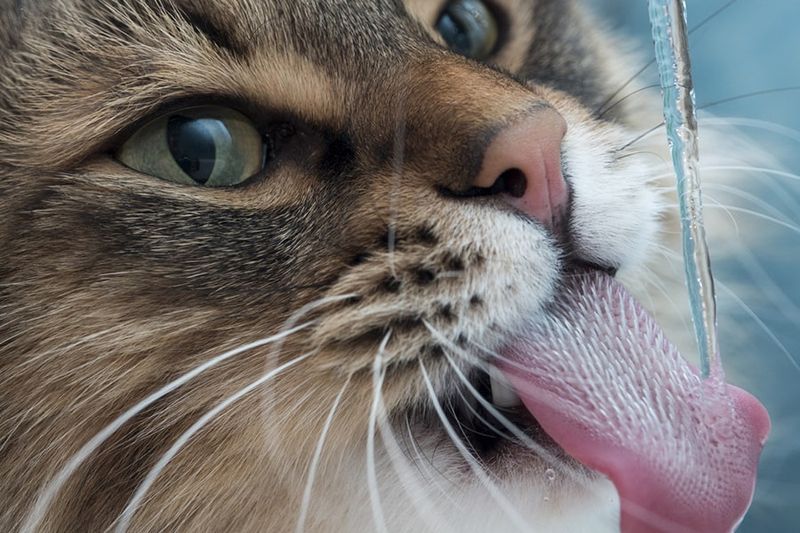
Rain puddles and stagnant water collect in flowerpots and yard equipment, creating perfect breeding spots for parasites. Cats drinking from these sources risk giardia, leptospirosis, and other waterborne illnesses.
Empty standing water regularly and provide fresh water indoors and in secure outdoor locations. Consider a pet fountain to entice cats away from dangerous drinking sources.
9. Garage And Shed Dangers
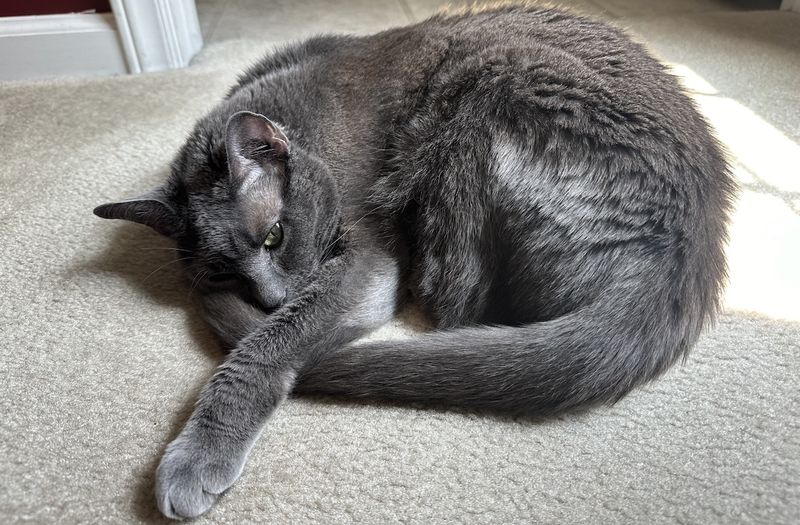
Spring projects mean more time in garages and sheds where antifreeze, motor oil, and paint thinners lurk. Just a teaspoon of sweet-tasting antifreeze can be fatal to cats.
Secure all chemical containers and wipe up spills immediately. Consider installing a cat-proof door or keeping these spaces completely off-limits during spring maintenance season.
10. Spring Garden Mulch
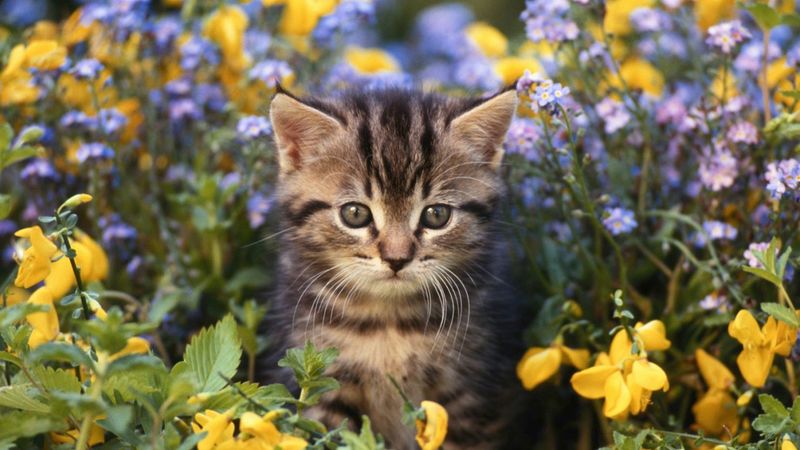
Cocoa mulch brings a delicious chocolate scent to garden beds but contains theobromine – the same toxin found in chocolate. Cats exploring freshly mulched areas risk poisoning if they ingest it.
Choose pet-safe alternatives like pine straw or cedar mulch. Create barriers around garden beds or supervise outdoor time when using any new garden products.
11. New Potted Plants
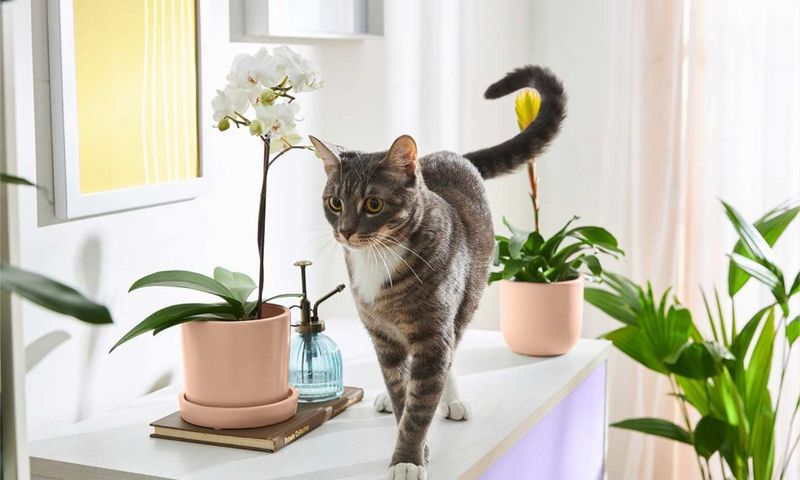
Spring decorating often includes new houseplants that may be toxic to curious cats. Popular options like peace lilies, pothos, and snake plants contain calcium oxalate crystals that cause painful mouth irritation and swelling.
Research pet-safe alternatives like spider plants or cat grass. Hang dangerous plants in macrame holders or place them behind barriers your cat can’t access.
12. Increased Neighborhood Traffic
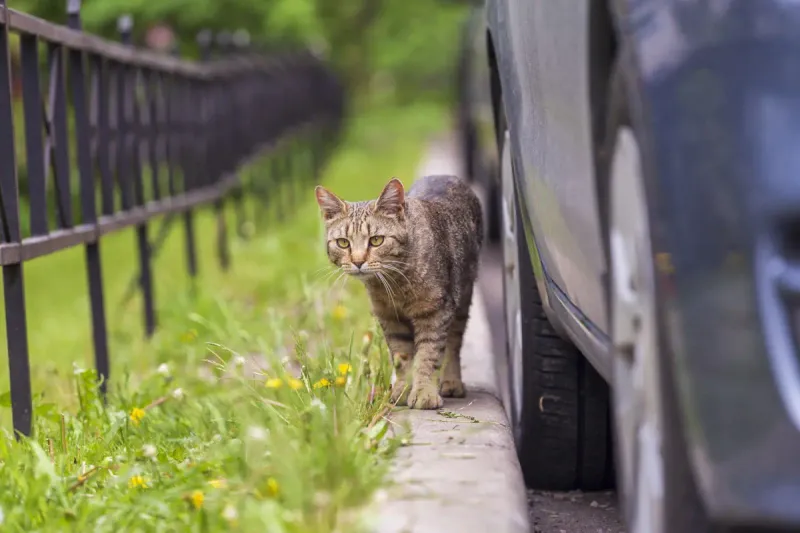
Pleasant weather brings more cars, bikes, and pedestrians to neighborhoods. Outdoor cats accustomed to quiet winter streets face increased traffic hazards as spring activities ramp up.
Consider restricting outdoor time to early mornings or supervised harness walks. Reflective collars with ID tags are essential for cats who go outdoors during this busier season.
13. Composting Hazards
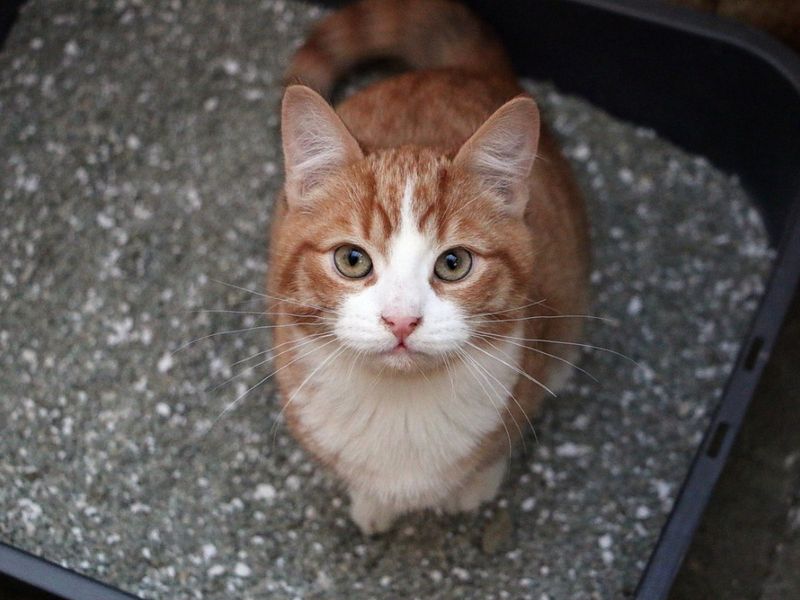
Spring gardening reactivates compost piles containing coffee grounds, moldy foods, and decomposing materials toxic to feline systems. Some compost develops tremorgenic mycotoxins that cause severe neurological symptoms in cats.
Use enclosed compost bins with secure lids cats can’t open. Place bins in areas inaccessible to pets or consider indoor vermicomposting systems kept in secure locations.
14. Seasonal Stress And Anxiety
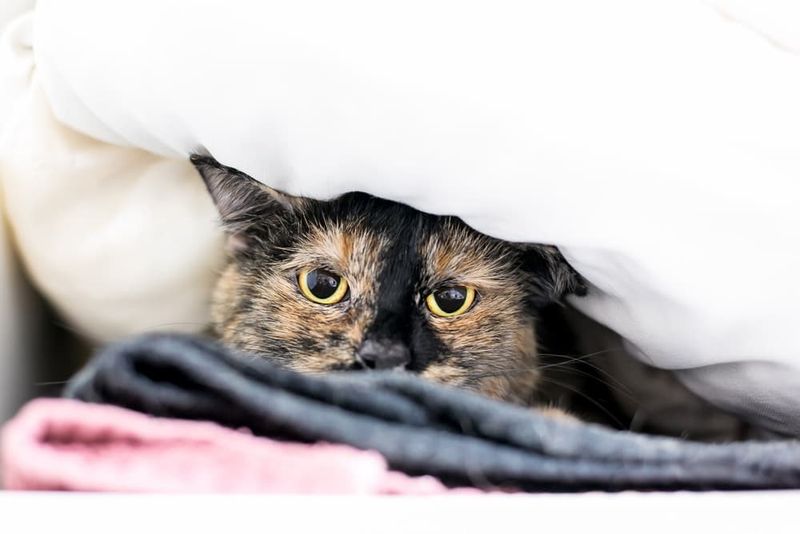
Longer daylight hours and increased outdoor activity can trigger anxiety in sensitive cats. Birds chirping at windows, new neighborhood cats marking territory, and changing household routines create invisible spring stressors.
Watch for signs like inappropriate elimination, excessive grooming, or aggression. Create quiet retreats throughout your home and maintain consistent feeding and play schedules during seasonal transitions.

